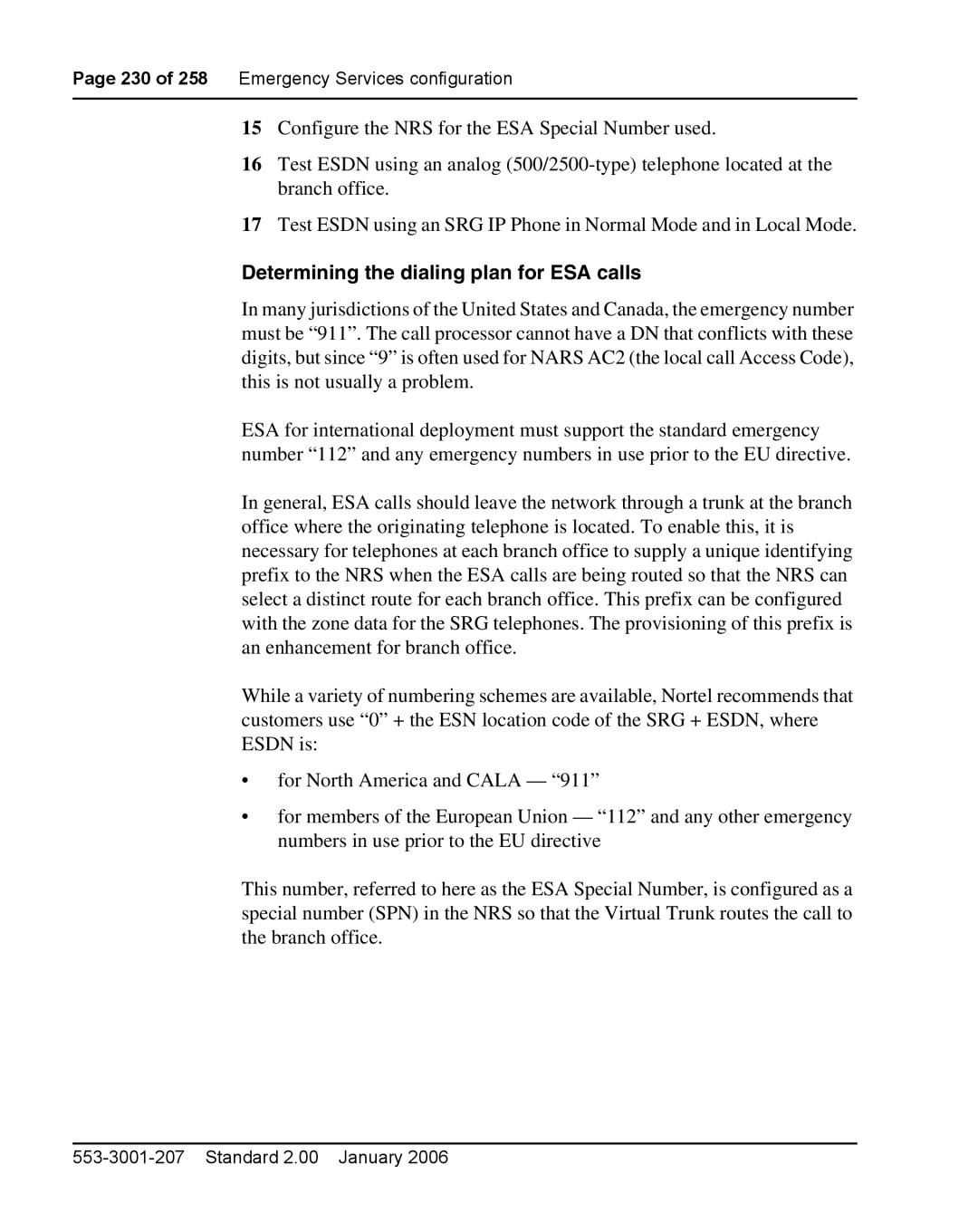
Page 230 of 258 Emergency Services configuration
15Configure the NRS for the ESA Special Number used.
16Test ESDN using an analog
17Test ESDN using an SRG IP Phone in Normal Mode and in Local Mode.
Determining the dialing plan for ESA calls
In many jurisdictions of the United States and Canada, the emergency number must be “911”. The call processor cannot have a DN that conflicts with these digits, but since “9” is often used for NARS AC2 (the local call Access Code), this is not usually a problem.
ESA for international deployment must support the standard emergency number “112” and any emergency numbers in use prior to the EU directive.
In general, ESA calls should leave the network through a trunk at the branch office where the originating telephone is located. To enable this, it is necessary for telephones at each branch office to supply a unique identifying prefix to the NRS when the ESA calls are being routed so that the NRS can select a distinct route for each branch office. This prefix can be configured with the zone data for the SRG telephones. The provisioning of this prefix is an enhancement for branch office.
While a variety of numbering schemes are available, Nortel recommends that customers use “0” + the ESN location code of the SRG + ESDN, where ESDN is:
•for North America and CALA — “911”
•for members of the European Union — “112” and any other emergency numbers in use prior to the EU directive
This number, referred to here as the ESA Special Number, is configured as a special number (SPN) in the NRS so that the Virtual Trunk routes the call to the branch office.
